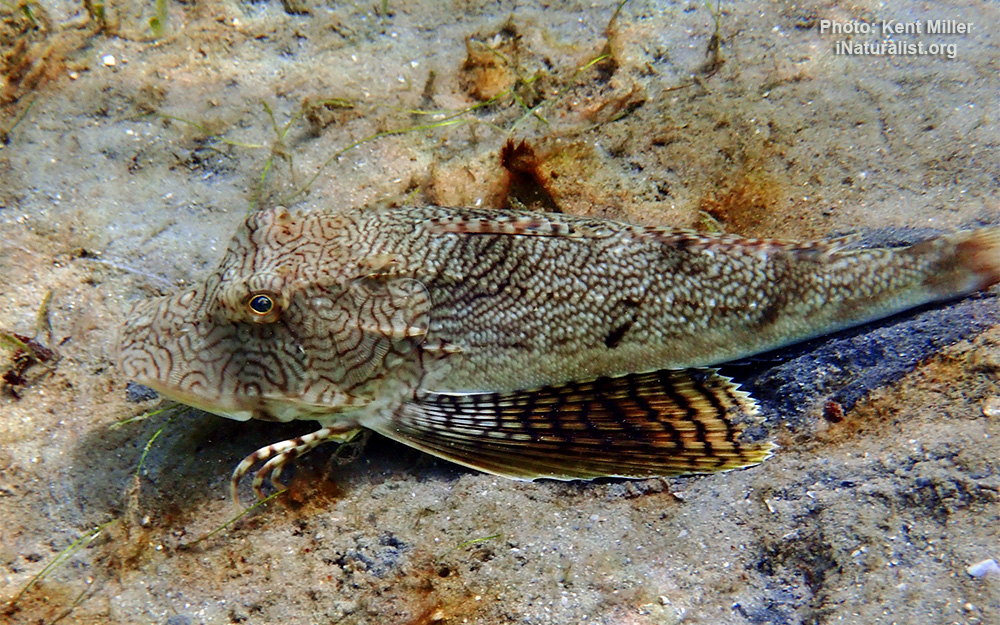Bighead searobin
(Prionotus tribulus)

Classification
General data
Western Atlantic: Chesapeake Bay to northern Florida and Gulf of Mexico from southern Florida to Texas, occasionally rounding Cape Sable to southeastern Florida in USA.
Dorsal spines 10 (rarely 9 or 11); posterior spines short and may be difficult to find. Soft dorsal fin with 12 or 13 rays. First and second dorsal spines never long and filamentous. Opercular membrane partially scaled above opercular spine.
Dark broad vertical bands on pectoral fin. Caudal fin with single broad, dark band. Mouth subterminal, lower jaw not extending beyond upper jaw and without small ventral knob. Pectoral fins moderate to long (equal to or greater than head length and extending to or beyond origin of anal fin). Coloration variable, body coloration not silvery.
Preopercular spine not short, reaching past operculum; body cavity ends at anal-fin origin. Nasal and supraocular cirri absent. Spinous dorsal fin without 2 non-ocellated spots; 1 spot may be ocellated or no distinct spots. Spinous dorsal fin without black spot surrounded by hyaline area extending anteriorly. Pectoral fins rounded, lower joined rays not longer than upper joined rays. Dark bands or lines extending entirely across pectoral fin, 2 lateral stripes or spots (may be partial) from head to caudal fin. Total gill rakers on first arch usually 8-16.











